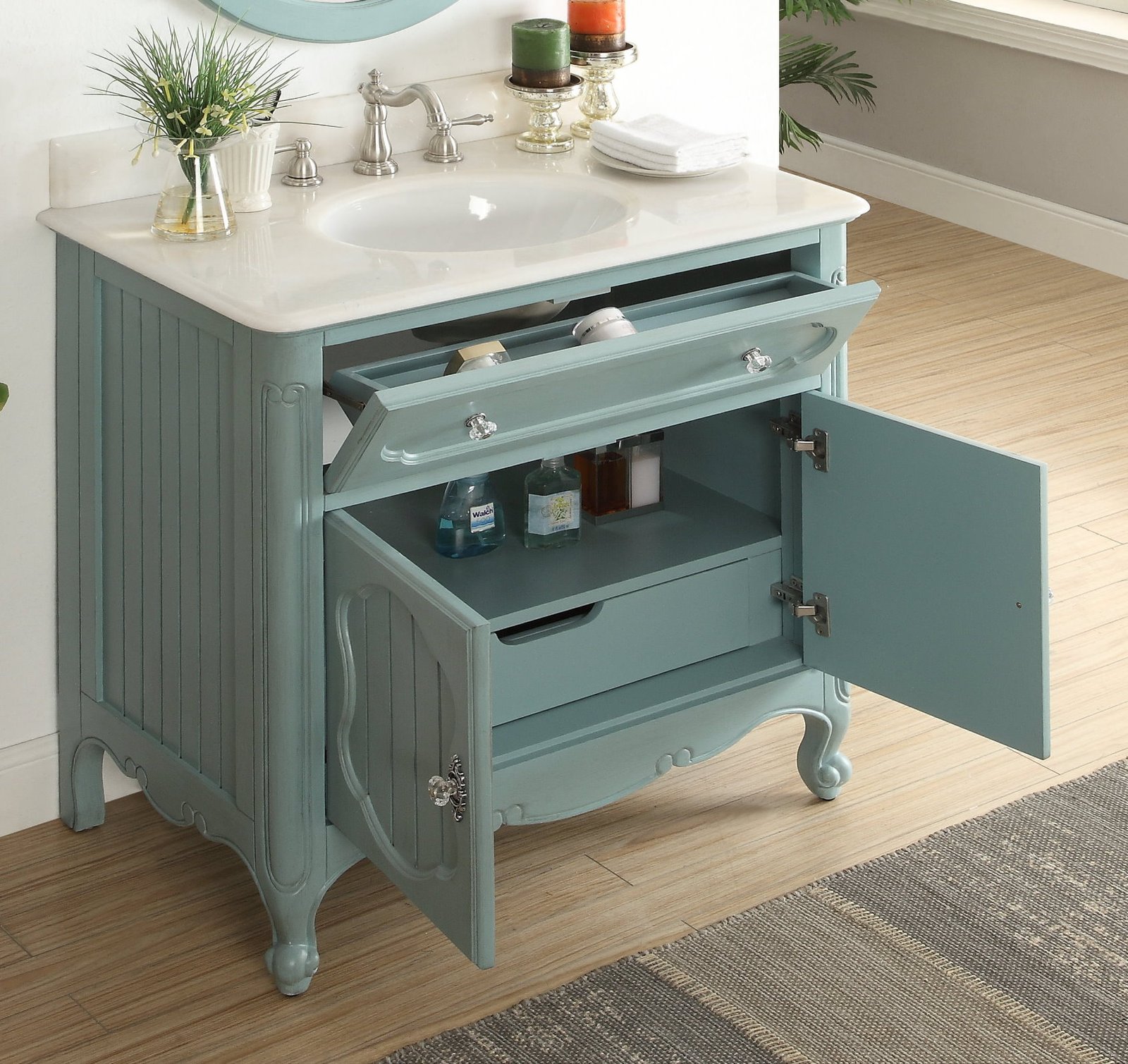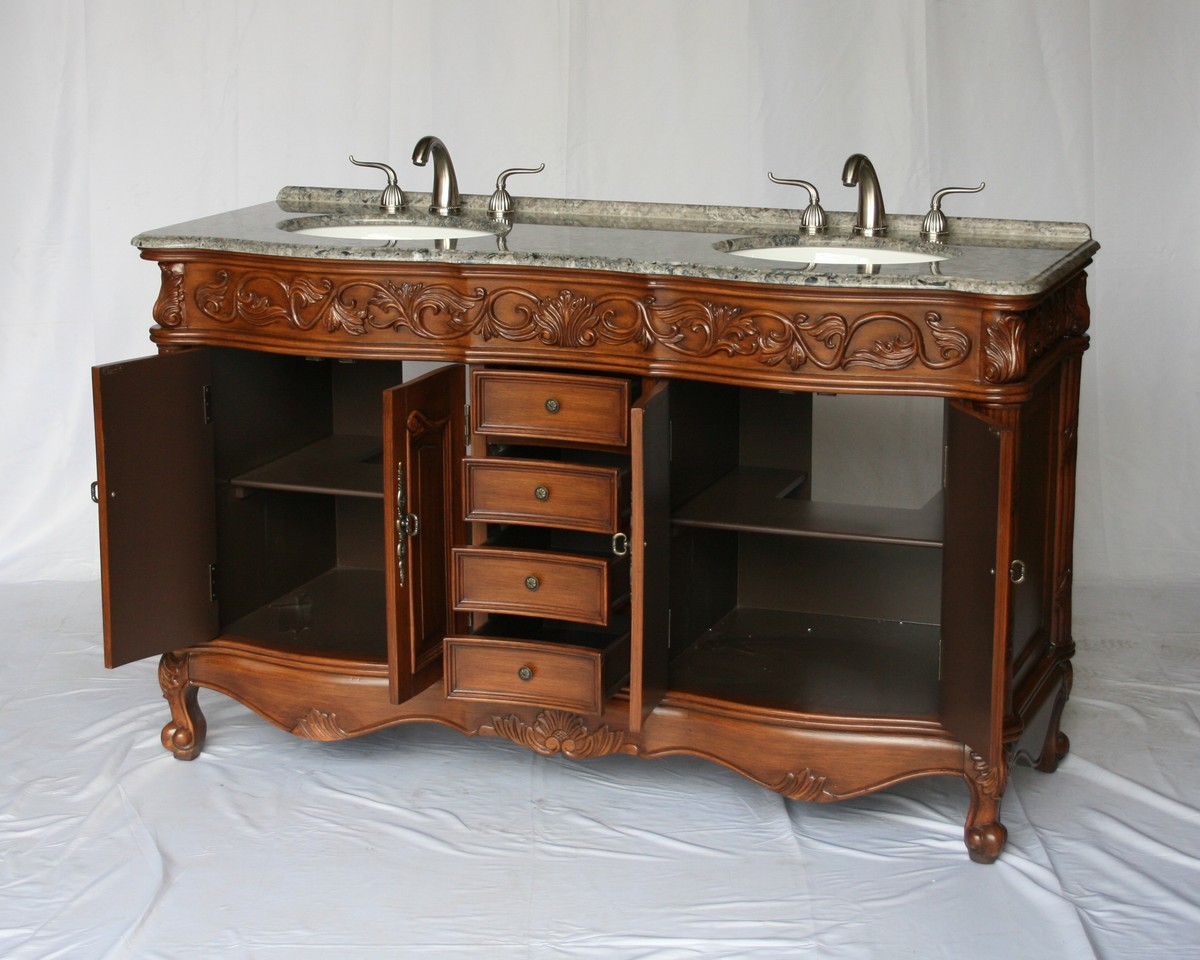Vintage Bathroom Vanity Styles

Vintage bathroom vanity with sink – Vintage bathroom vanities exude a timeless charm, adding character and elegance to any bathroom. Defined by their intricate details, durable construction, and often ornate designs, these vanities transport you back to a bygone era.
Vintage vanities are crafted from a variety of materials, including wood, metal, and porcelain. They often feature intricate carvings, decorative hardware, and unique finishes that reflect the design sensibilities of their respective eras.
Vintage bathroom vanities with sinks are making a comeback, but it’s important to consider modern conveniences like ADA compliant bathroom sinks. These sinks are designed to be accessible for people with disabilities, and they can add a touch of style to your bathroom.
When choosing a vintage bathroom vanity with sink, look for one that has been updated with modern features like an ADA compliant sink. This will ensure that your bathroom is both stylish and functional.
Art Deco Vanities
Art Deco vanities, popular in the 1920s and 1930s, are characterized by their geometric designs, bold colors, and streamlined shapes. They often feature chrome or nickel accents, as well as geometric patterns in the woodwork or tile.
Vintage bathroom vanities with sinks offer a touch of nostalgia to any bathroom. If you’re looking for a more space-saving option, consider a corner bathroom sink cabinet. These cabinets fit snugly into the corner of your bathroom, maximizing space and providing ample storage.
The combination of a vintage vanity and a corner sink cabinet creates a unique and functional bathroom design that combines the best of both worlds.
Victorian Vanities
Victorian vanities, prevalent in the mid-19th century, are known for their elaborate carvings, ornate details, and rich finishes. They are typically made of dark wood, such as mahogany or walnut, and feature intricate carvings of flowers, scrolls, and other decorative motifs.
Mid-Century Modern Vanities
Mid-Century Modern vanities, popular in the 1950s and 1960s, are characterized by their clean lines, simple shapes, and use of natural materials. They often feature floating designs, tapered legs, and built-in storage.
Considerations for Choosing a Vintage Bathroom Vanity

When selecting a vintage bathroom vanity, there are several key factors to consider to ensure it seamlessly integrates with your bathroom’s design and functionality.
Matching the vanity to the overall bathroom design and style is crucial for creating a cohesive and aesthetically pleasing space. Consider the existing color scheme, fixtures, and flooring when choosing the vanity’s finish, hardware, and overall design.
Size and Shape
The size and shape of the vanity should complement the dimensions of your bathroom. Measure the available space carefully and choose a vanity that fits comfortably without overcrowding the room. Consider the shape of the room and the location of other fixtures to determine the best vanity shape, whether rectangular, oval, or L-shaped.
Functionality
The functionality of the vanity is equally important. Determine the number of drawers and cabinets you need for storage and choose a vanity with ample space to accommodate your bathroom essentials. Consider the type of sink you prefer, whether it’s a single or double basin, and ensure it meets your daily needs.
Authenticity
If you’re seeking a genuine vintage vanity, it’s essential to authenticate its authenticity. Look for signs of age, such as patina, wear and tear, or original hardware. Consult with antique dealers or experts to verify the vanity’s age and origin.
Installation and Maintenance of Vintage Bathroom Vanities: Vintage Bathroom Vanity With Sink

Installing and maintaining a vintage bathroom vanity requires careful attention to detail and proper techniques. Understanding the steps involved and potential challenges can help ensure a successful installation and preserve the beauty of your vanity for years to come.
Installation
- Prepare the Space: Clear the installation area, remove any existing fixtures, and ensure the space is level and square.
- Assemble the Vanity: Follow the manufacturer’s instructions to assemble the vanity, including attaching the base, countertop, and sink.
- Connect Plumbing: Install the faucet, drain, and water supply lines according to the manufacturer’s instructions. Test for leaks before proceeding.
- Secure the Vanity: Place the vanity in its intended location and secure it to the wall using screws or brackets.
- Level and Adjust: Use a level to ensure the vanity is level and make any necessary adjustments to the legs or feet.
Special Considerations, Vintage bathroom vanity with sink
Weight and Stability: Vintage vanities may be heavy, so consider the weight capacity of the floor and ensure proper support.
Antique Finishes: Handle antique finishes with care during installation to avoid damage. Use soft cloths and avoid abrasive cleaners.
Electrical Wiring: If the vanity includes electrical components, ensure they are properly grounded and installed according to electrical codes.
Maintenance
Cleaning: Use mild soap and water to clean the vanity. Avoid harsh chemicals or abrasive cleaners that could damage the finish.
Refinishing: Over time, the finish of a vintage vanity may fade or deteriorate. Consider refinishing techniques such as painting, staining, or varnishing to restore its original beauty.
Regular Inspections: Regularly inspect the vanity for any signs of damage or leaks. Address any issues promptly to prevent further deterioration.